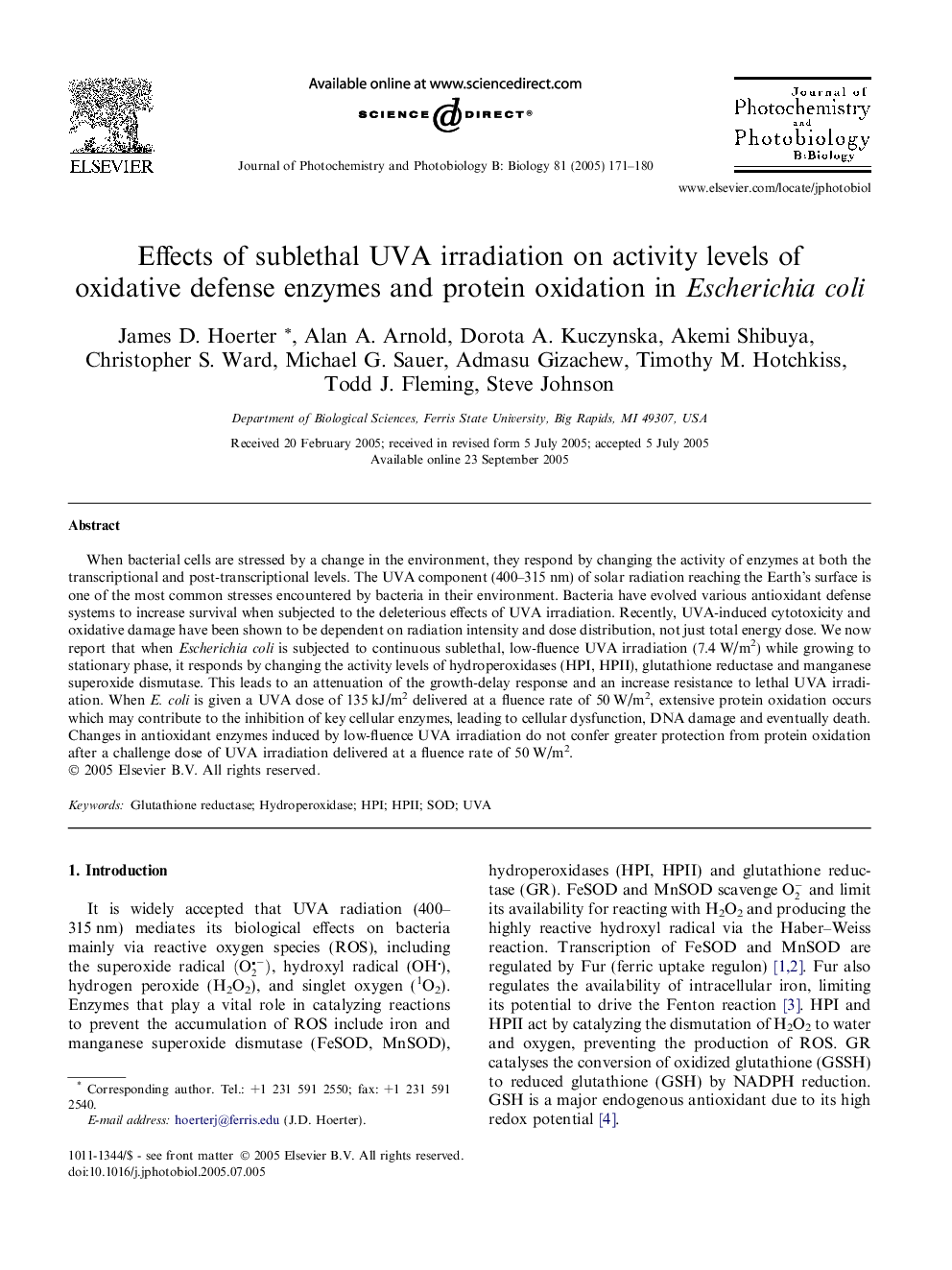| Article ID | Journal | Published Year | Pages | File Type |
|---|---|---|---|---|
| 9606988 | Journal of Photochemistry and Photobiology B: Biology | 2005 | 10 Pages |
Abstract
When bacterial cells are stressed by a change in the environment, they respond by changing the activity of enzymes at both the transcriptional and post-transcriptional levels. The UVA component (400-315Â nm) of solar radiation reaching the Earth's surface is one of the most common stresses encountered by bacteria in their environment. Bacteria have evolved various antioxidant defense systems to increase survival when subjected to the deleterious effects of UVA irradiation. Recently, UVA-induced cytotoxicity and oxidative damage have been shown to be dependent on radiation intensity and dose distribution, not just total energy dose. We now report that when Escherichia coli is subjected to continuous sublethal, low-fluence UVA irradiation (7.4Â W/m2) while growing to stationary phase, it responds by changing the activity levels of hydroperoxidases (HPI, HPII), glutathione reductase and manganese superoxide dismutase. This leads to an attenuation of the growth-delay response and an increase resistance to lethal UVA irradiation. When E. coli is given a UVA dose of 135Â kJ/m2 delivered at a fluence rate of 50Â W/m2, extensive protein oxidation occurs which may contribute to the inhibition of key cellular enzymes, leading to cellular dysfunction, DNA damage and eventually death. Changes in antioxidant enzymes induced by low-fluence UVA irradiation do not confer greater protection from protein oxidation after a challenge dose of UVA irradiation delivered at a fluence rate of 50Â W/m2.
Related Topics
Physical Sciences and Engineering
Chemical Engineering
Bioengineering
Authors
James D. Hoerter, Alan A. Arnold, Dorota A. Kuczynska, Akemi Shibuya, Christopher S. Ward, Michael G. Sauer, Admasu Gizachew, Timothy M. Hotchkiss, Todd J. Fleming, Steve Johnson,
